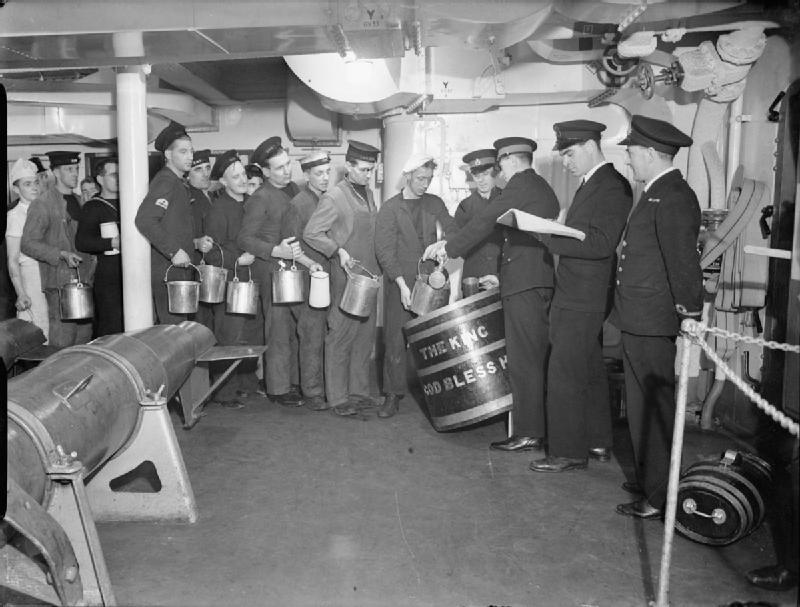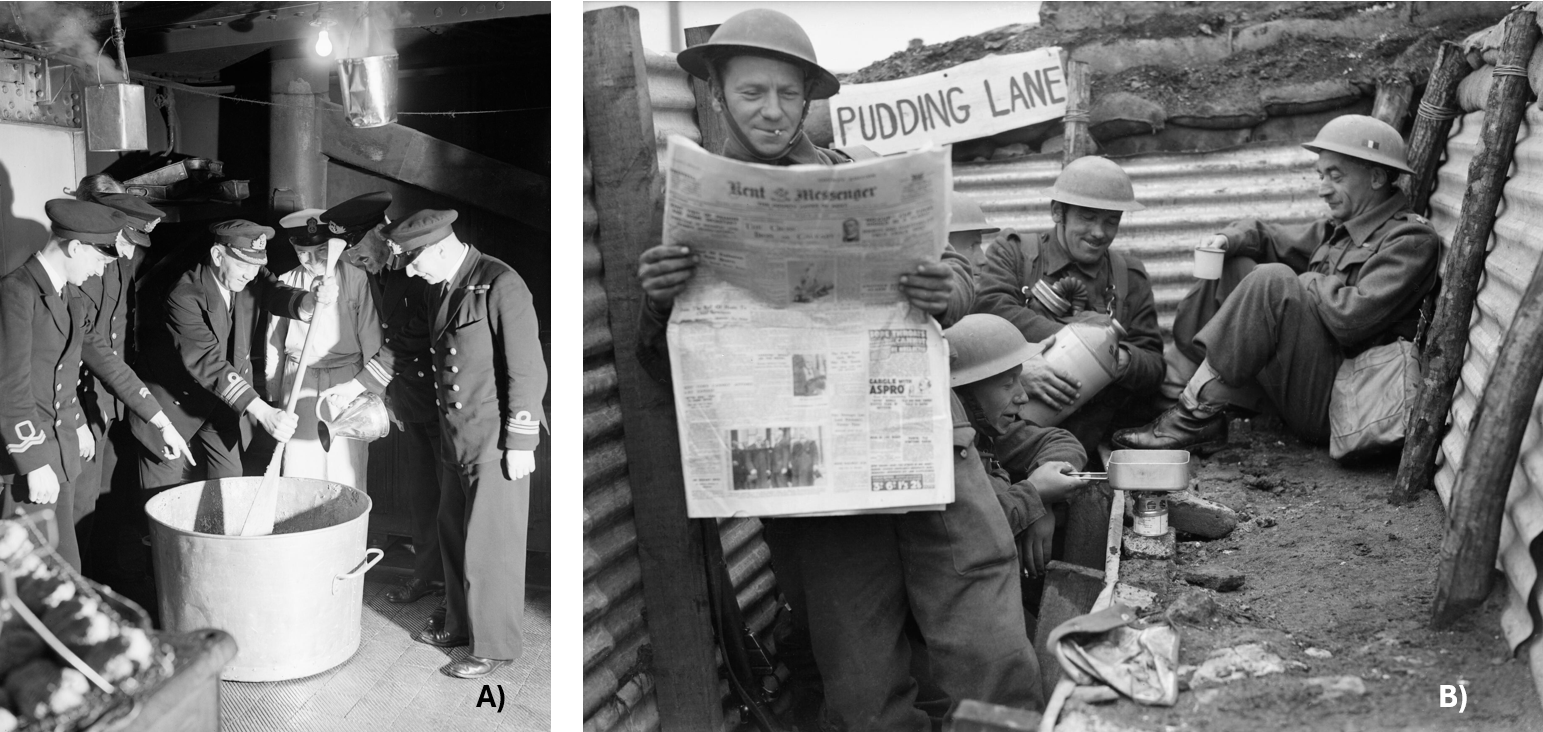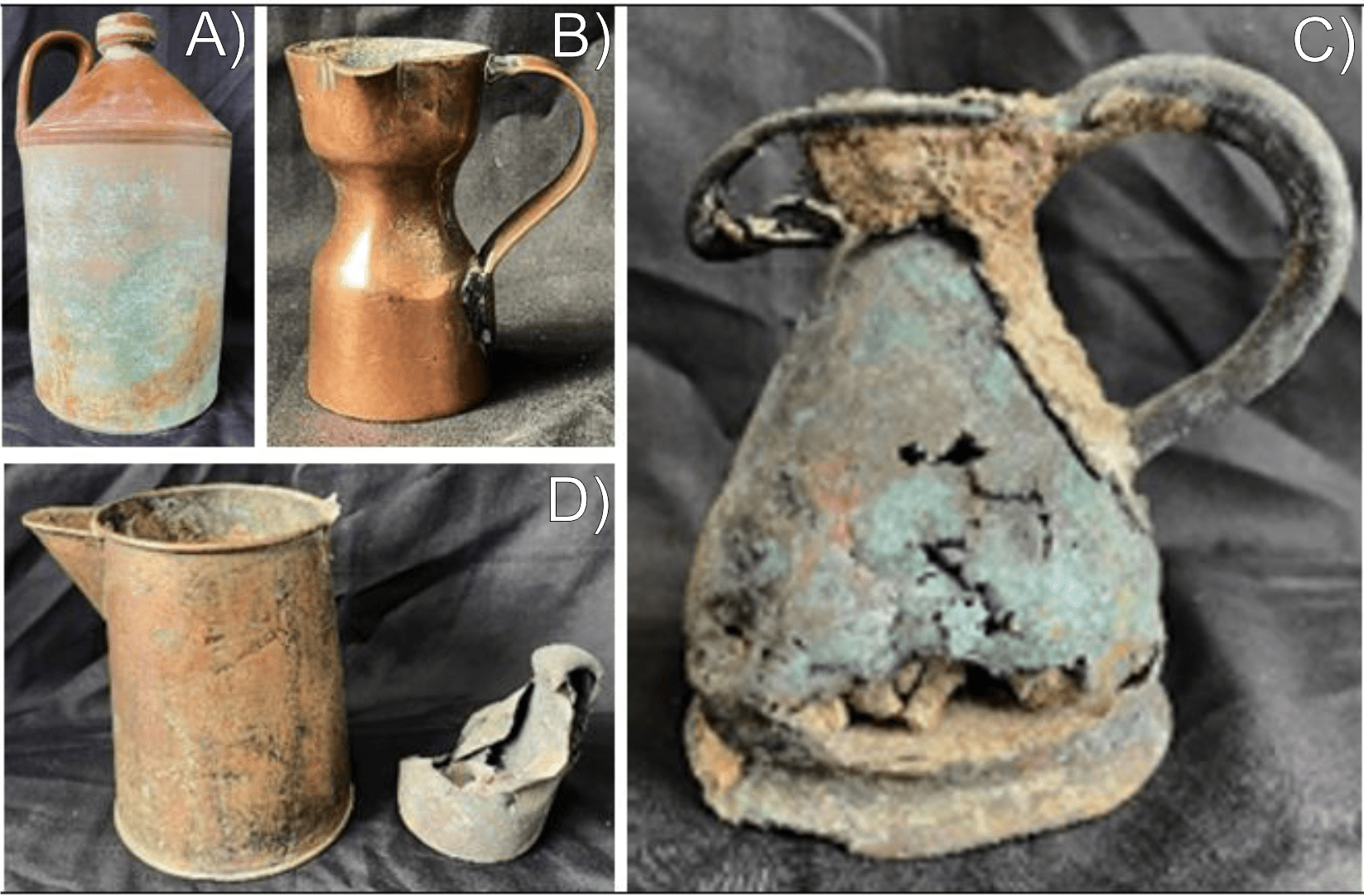Bermuda, sheets, hurricane, stormy, each has a maritime drink connection. But what else? Cocktail connoisseurs will correctly be thinking of rum, of which more later. National Rum Day is celebrated on 16 August, and volunteer Roger Burns delves in to the history of rum and its long association with the Royal Navy.
Origins of Rum
Historically, during the 17th century, large plantations in the West Indies grew sugar cane, the objective being the extracted sugar but, inevitably, a by-product was produced called molasses which for years was simply a waste. Eventually, a discovery that it could be distilled transformed the waste, creating, inter-alia, a liquid which was called rum.
This led to the West Indies being the then prime source of rum, although it is now sourced from other sugar cane production areas. The West Indies dominance at the time led to trade imbalances exacerbated during conflicts at sea, and in 1764, the Sugar Act was passed, repealed two years later for the 1766 Revenue Act, but the 1764 Act was a catalyst for the American Revolution and the War for Independence.
The Navy Before & After 1707
Being an Island Nation, Britian had a naval presence from the 8th or 9th centuries, with the Royal Scots Navy merging with the Royal Navy in 1707, with accounts shown here for pre-1707 and then more extensively post-1707.
From early times, ships carried alcoholic beverages because it had soon been found that drinking water carried in barrels usually became green and slimy, unfit for consumption, whereas alcohol lasted longer and was a safer option at sea. Incidentally, it was found that alcohol in barrels often improved with age which led to the practice of aging spirits if not opened, similar to whisky today and in fact, aging at sea is carried out today. The alcohol of the day, beer, deteriorated with age, although beers with higher alcohol content lasted longer. Thus, ships tried to acquire alcohol at ports which they visited.
Amounts of alcohol consumed daily varied according to each captain. But in 1731, sailors were given their first official daily alcohol ration, apparently either eight pints, (c. 4.5 litres) of beer or a half pint (c.0.3 litres) of spirit according to availability. This entitlement was enshrined in the 1731 regulations.
Adoption of Rum in the Navy
Rum quickly became the preferred ration. However, realisation dawned that the rum ration was counterproductive to good discipline, and it was not long before the ration was halved, not once but again soon afterwards, to one gill, which is one-quarter of a pint or 142millilitres dispensed in two halves daily. And then in 1740, Admiral Edward Vernon ordered that the rum for the lower officer ranks be diluted with water. Vernon was nicknamed “Old Grog” by his sailors, due to his habitual wearing of a grogram coat, a coarse fabric consisting of silk together with mohair or wool, stiffened with gum. This was the source of the term “grog”. Sailors could opt for money in lieu of rum but the payments were quarterly and very low so rum was usually accepted as it could also be used for bartering on board, for example food, shore leave and the like. Rum was encouraged also because it could be mixed with lime, already carried by ships and dispensed daily to sailors although it was not until the 1790s that the connection between citrus and scurvy reduction was formalised, resulting in the Navy’s Sick and Hurt Board ordering that all sailors on ships be given fresh lemon juice. This practice was adopted by other navies.
The Navy in 1784 decided to centralise rum supplies and contracted with James Man’s company, which became E.D.& F. Man, to supply Navy Rum to the fleet. Navy Rum depended primarily on sources of supply, thus its constituent sources varied, brought to London from the Caribbean and elsewhere including Cuba and Mauritius. Rum Warehouses and blending facilities were constructed in the early 1800s at the South Quay Import Dock in London’s West India Docks, details of which are elaborated here. These facilities, now Grade 1 listed, peaked at up to four million gallons of rum. An idea of the scale can be seen in Figure 1, showing hundreds of gallon rum jars waiting to be filled. (I gallon is c.4.54 litres)

Figure 1: Gallon Rum Jars. Unknown location, First World War
Source: British official photographer, Public domain, via Wikimedia Commons
However, in 1850, Naval sobriety with a view to ending the rum ration at sea was debated in Parliament. It was again debated in 1881, but that was as far as it went. Rum consumption at sea continued through to the 20th century, two examples being shown in Figures 2 & 3A, and in Figure 3B, rum was also consumed on special occasions by the Army during the Second World War trenches.

Figure 2: Rum Ration Aboard HMS King George V, 1940
Source: Beadell, S J (Lt), Royal Navy official photographer, Public domain, via Wikimedia Commons.
Below deck, a line of seamen queue to collect the daily rum ration for their mess. Each man is holding a jug or bucket. The rum is being issued from a large barrel with ‘THE KING – GOD BLESS HIM’ on it. Royal Marines issue the rum with measuring jugs while a Royal Navy Petty Officer and Sub-Lieutenant observe.
The rum barrel is typical of those used on board ships, and would carry the monarch’s name.

Figure 3A: The Commander of a destroyer depot ship in the Home Fleet at Scapa Flow stirring the Christmas pudding, while the First Lieutenant adds a tot of rum, 12 December 1942, Source: Hudson, F A (Lt), Royal Navy official photographer, Public domain, via Wikimedia Commons
Figure 3B: Men of the 1st Queen’s Own Royal West Kent Regiment enjoy a tot of rum in a section of trench named ‘Pudding Lane’, 4th Division near Roubaix, 3 April 1940. Source: Puttnam L A (Lt), War Office official photographer, Public domain, via Wikimedia Commons
The Demise of the Tot Tradition
The traditional rum tot on board was finally ended on 31 July 1970, following a debate in Parliament, with arguments both ways for its continuance, but the increasing sophistication and complexity of naval weaponry and associated control systems on naval ships won the day. Some days previously, the last rum supplies had been issued and on the 31st, various naval establishments and ships had their last ration and a variety of events, such as funerals, abounded to mark the day which became known as “Black Tot Day. One example was reported in that day’s Aberdeen Evening Express:
‘RUM RATION GOES ‘DOWN THE HATCH’
THE ROYAL NAVY at Lossiemouth paid a final mournful tribute today to the death of part of Britain’s naval tradition—the daily “tot” of rum. The last issues of rum were solemnly placed on top of a coffin on a black-draped gun carriage and wheeled through the Moray air station. The procession was led by a piper playing a lament—and a funeral party of 10 Navymen stood with guns reversed in a silent tribute. At the various messes, where the rum was received, the ratings accepted their last tots with heads bowed. A commemorative plaque was unveiled at the Lossiemouth station rum store by Commander Bill Faulkner. He read out a specially prepared poem to mark the end of nearly 250 years of Navy tradition. One of the lines of the poem summed up the feelings of all Navymen regarding the decision to scrap the daily rum issue. It said simply: “If Nelson had known he would have turned in his grave.”
Recovered Artefacts
The Shipwreck Centre display several items recovered from nearby shipwrecks, Figure 4. You can also see the museum’s founder, Martin Woodward, share a snippet about rum bottles found on the HMS Velox in the video Tipple From The Deep.

Figure 4: Four recovered rum objects
Figure 4A – Rum flagon from HMS Boxer, with a Site Report here.
Figure 4B – Copper rum measuring jug from Submarine HMS A1 – 85mm high, 65mm wide.
Figure 4C – Very corroded rum jug from an unknown wreck, 120mm high, weighs 833g.
Figure 4D – From submarine HMS A1, a rum jug together with an unrestored less intact example.
Maritime Archaeology Trust
Interesting Miscellany
A Dagenham public house is named Admiral Vernon who in 1740, ordered the dilution of rum for the ranks, as mentioned above. The pub was recently Grade II listed.
A Royal Navy board game, called Uckers and explained here, even has a World Championship sponsored by Pusser’s Rum. The term Pusser is derived from Purser, a warrant officer rank on board ships, appointed by the Victualling Board.
And finally, the cocktail aficionados should enjoy a variety of rum based cocktail recipes and there are several other websites offering recipes too.
